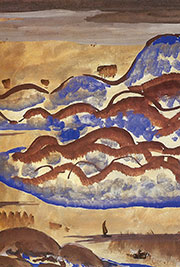An upcoming Upcoming Early Modern Circle that may be of interest.
Wed 19 April at 6:15 pm in the North Theatre, Room 239 Old Arts, University of Melbourne. (Please note the altered date due to the Easter holidays)
Shannon Gilmore, Ph.D Candidate, University of California, Santa Barbara
(*Wednesday due to Easter Holidays)
“In that vile place”: The Miraculous Image of Santa Maria delle Carceri at the Prison in Prato
In the summer of 1484, a fresco of the Madonna and Child Enthroned in the Tuscan town of Prato miraculously came to life. Hoping to receive relief from their troubles, pilgrims from the surrounding countryside began gathering around the image, which was painted on an abandoned prison and located in an impoverished area of town. Despite the marginal nature of the fresco’s location, the image’s devotees insisted that the prison’s structure be enshrined within the new church that was being built to house the popular cult. This sudden surge in devotion to a peripherally located miraculous image was part of a larger religious phenomenon in the late fifteenth century, a time when Marian image cults proliferated in the territory controlled by Florence. Focusing on the case study of Santa Maria delle Carceri in Prato, this paper will highlight the ways in which the cult strengthened the peoples’ ties to their own town rather than to the expansive Florentine state. I will employ Edward Casey’s theory of place to analyze how the rituals and founding miracles associated with the cult worked to ground the miraculous image and the devotees in the place of the abandoned prison.
Shannon Gilmore is a PhD Candidate with the Department of the History of Art and Architecture at the University of California, Santa Barbara. In 2009, she was awarded her MA in Italian Renaissance Art History from Syracuse University, having been selected as a fellow in their program based in Florence, Italy. She currently specializes in late medieval and Renaissance devotional painting in Central Italy, with a particular emphasis on theories of place and ritual. Her essay, “Ritually Reconstructing Calvary: Sacred Space and Gender at the House of Mary in Ephesus,” was accepted for publication in the forthcoming edited volume, Civic and Domestic Religion in Ancient Ephesos.
All enquiries to j.robarts@student.




